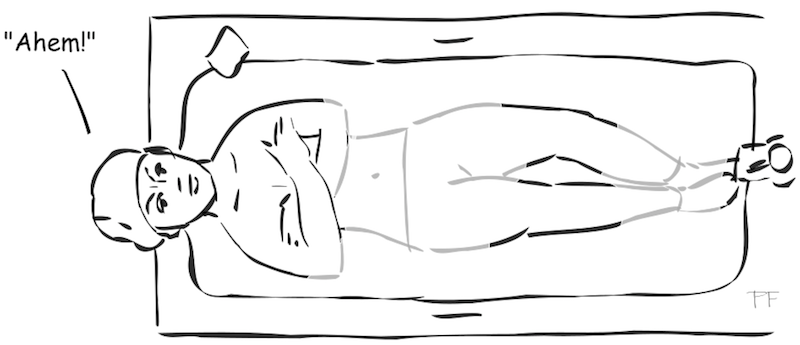I suppose it all started in a bathtub in 1981
I suppose it all started in a bathtub in 1981. I was working for the Wrangler jeans company in Paris. My boss was in his bathtub. (I hasten to add that I was not present at the time.) We had a line of ‘shrink to fit’ jeans. The idea was that you would get into a hot bath with the new jeans, soak for a while, and they would shrink 12% to fit your body perfectly. In the trade, we called these ‘spray on jeans’. I leave it to your imagination to understand why. The target market was of course shapely young women.
What to do while waiting for the shrinking to happen
While my boss was waiting for the shrinking to happen, he played around with a pumice stone, rubbing it on the jeans. These are the stones people use to rub excess skin off their feet and elsewhere. The more he rubbed, the more he exposed the white fibres at the center of the indigo-dyed fabric. He liked what he saw, went out and bought all the pumice stones he could find, and destroyed his home washing machine trying out his idea. In short, he (David Hayes) was one of a number of people at the origin of high-volume stonewashing of jeans. I was his quality and engineering manager. He came into the office the following morning and told me to make what he had done into a high-volume commercially-viable process.
Read on below the drawing to learn what happened next…
Let’s ask customers what they want
While that would be a story in itself, what is relevant here is what happened when I decided to ask our customers what they actually thought of our jeans and what they wanted us to improve. It was not at all what we expected. Like most large companies that are perceived as consumer businesses, we were actually a B2B company, selling only to retail stores and chains.
Since nobody had ever gone out and asked store owners for their opinions in a formal way, I consulted with my corporate colleagues first. My HQ friends in Greensboro, North Carolina were sure the store owners would mainly have huge concerns about how stonewashing was destroying the stitching, weakening the fabric, damaging the rivets and so on. Others thought the input would be around the accuracy of order picking. Still others were certain the jeans would be ignored and that all the input would be about the new line of shirts. Overall, the message I received loud and clear was “Don’t waste your time asking. We already know what the customers want.” They were all wrong. Since I initially believed what they said, I was wrong too.
A sales person wanted to go ahead
One of the sales people (Jackie Zerbib) was enthusiastic about the research, so we went ahead, despite the input from my colleagues. I also ignored advice to ask a series of detailed question about the stitching, rivets and so on, and just went out with a few open questions. We visited the major boutiques in Paris and got a lot of surprises.
Lots of surprises
The most important thing by far to them was that we should deliver all goods during the half-day we promised. It turned out that they would arrange for family and friends to come over to help unload the cartons and put things on the shelves. Order picking accuracy did not matter much. They were happy to put whatever they received on the shelves and try to sell it over the weekend, returning it on the Monday if we had made a mistake. The quality of the fabric, stitching, zips and rivets was never mentioned. The uniformity of stonewashing mattered a lot. “We get women who want the look they see in a jean that is not available in their size. You really need to make the stonewashing more uniform, so it looks the same in all sizes.”
Demand was not an issue. We were #1 in the market, had launched the ‘Rock Wash’ jeans together with pirate radio station RFM, and had great advertising billboards everywhere. French readers who were teenagers or more at the time may remember ‘Cool Raoul’, ‘A l’aise Blaise’ and other slogans developed by Robin Hunter-Coddington and his team.
None of the top customer wishes were what we expected
In short, none of the top five priorities were on the list of what we expected. The corporate expectations were even further from the customers’ reality.
I regret to say that the main reaction of the HQ people was “That’s just those crazy French people. You shouldn’t pay any attention to what they say.” Locally, we implemented a plan to improve the main things they suggested. It worked, and we retained leadership over Levis, Lois, Jesus Jeans, and Lee. Thanks to David Hayes for the leadership.
So… what is the message here?
The message here is not about jeans or Parisian clothing stores. The message is that if you believe you know what your customers want, but have not actually asked them, you are probably wrong.
All comments and stories welcome!
Maurice




